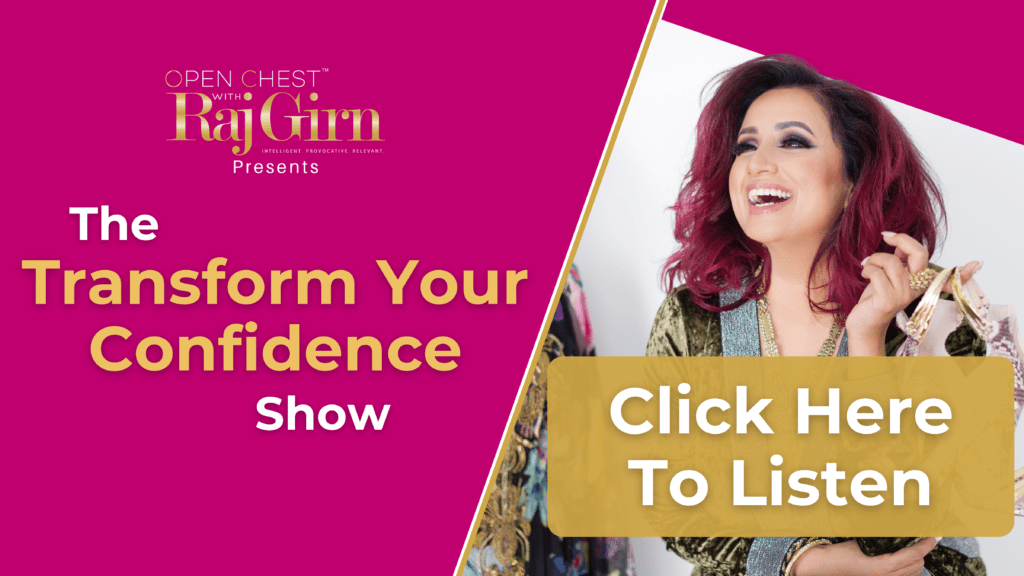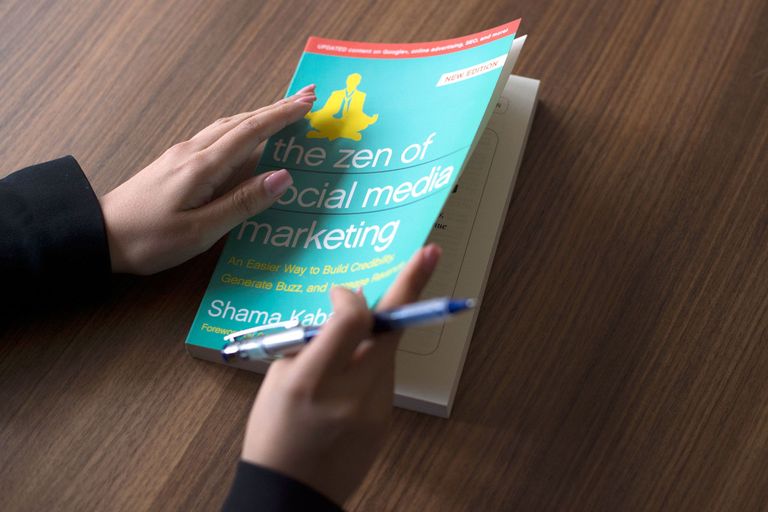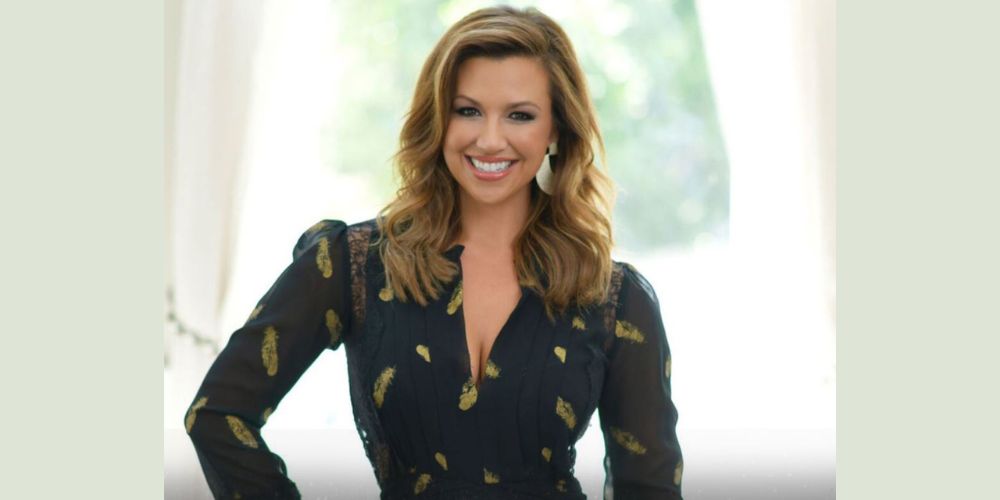Raj Girn: My guest is the fabulous Shama Hyder, who is the visionary strategist for the digital age, a web and TV personality, a two-time best selling author, and the award-winning CEO of Zen Media, a global marketing and digital PR firm that helps B2B and B2C brands make meaningful connections with the modern-day customer via influencer marketing and experiential and digital storytelling and then turn them into bottom-line results.
This is Part Two of our conversation:

Raj Girn: I think also another piece I find with my clients that they always miss when they’ve gotten all of these various ducks in a row is the actual length of time and effort that it takes to nurture the relationships. I want to kind of take our conversation in that direction a little bit. I want to ask you the nurturing part of the process when creating a relationship with cold leads, for example, people who you want to convert into warm leads and hopefully one day they will become a part of your ecosystem. It’s absolutely a non-negotiable requirement to nurture and have that as part of your process. I want to ask you this. What have you found to work here in this area of nurturing that relates to marketing and social media marketing specifically?
Yeah, so the simple answer is time.
Yes.

And so one of the things I talk about in The Zen of Social Media Marketing book, it’s now it’s in its fourth edition. And by the way, I highly recommend it. If you’re just getting started. If you are advanced, skip it. But if you are a beginner, I think it’s got a really valuable framework for how social media works and how all this fits in together and whatnot. It’s used to teach the subject in college classes around the world. So it’s a good primer if you’re curious. What I find fascinating is, and I mentioned this in the book, is that marketing can think about it . . . I call this the ACT model: Attract, Convert, Transform. So the A is for attracting. Can you attract people? Like how do they even know you exist? Like hello. I exist. C is converted. How do you convert them to your point, Raj, to be part of your ecosystem? And then to transform. How do you build on that success?
Because so much of, this to the point of storytelling, is you take your success, you share it and you get more. Meaning when you, let’s say you are a weight loss coach and you’re a fitness trainer. When you have those initial clients where you have success and you’re sharing their stories with their permission and they’re thrilled because they’ve gotten these great results. Those are the same stories that someone’s going to be like, “Wow, I want those results” and is then attracted into the funnel. So, one, I hope you’re seeing that a great product or service is non-negotiable. That’s what gets you. That’s what gets a turning.
Now, the C is interesting because I talk about two Cs, there’s the big C and the giant C. So the big C is a consumer. Someone will become a consumer long before they’ll become a customer and client and the client customers, the big C, is where someone says, “Here’s my money, help me out.” But the mini C, the consumer, this is where they’re consuming your content. This is where they are watching the podcast. They’re signing up to the newsletter. They are following you on LinkedIn. So they start consuming your content long before they become a customer or a client. And yes, that part that is nurturing. How do you nurture many of the same things we talked about — old media, earned media. Again, bottom line, provide value and do it consistently.
“Someone will become a consumer long before they’ll become a customer and client and the client customers, the big C, is where someone says, ‘Here’s my money, help me out.’ But the mini Cs, the consumer, this is where they’re consuming your content” ~Shama Hyder
Absolutely. And you just touched upon something that I want to make sure that we really focus on a little bit here with everyone that is listening, watching and reading this. You created a statement that specifically had a line in the sand with who is a consumer and who is your client when a lot of people use those terms interchangeably. I really want to kind of bring that into the conversation a little bit. Can you maybe expand on that a little bit? Because a lot of thought leaders out there interchange those two terms, but you’re not doing that. You’re the first person I’ve heard say that. Can you share a little bit for people so that they’re very clear on the difference between a consumer and a client?
Sure. And here’s the thing. I mean, you can use the terms interchangeably if you wish. The way I’m defining a consumer is someone who is part of your ecosystem but is not a paying client or a customer yet. So this might be a well-wishers. This is someone who shares your work. Maybe they’ll never be a customer or client, but they will share your work. And this happens all the time. They will share your information with someone because they’re a fan. They genuinely get value out of what you do, but maybe they’re not the buyer. And that’s okay. I have a global audience of millions — I think our last social reach was like three million across all social platforms. Not all those people are our customers or clients. It’s the media, that’s fine.
Not all of them are even a fit for what we do and who we serve. But through their getting value and sharing the content . . . Or I had a client that came through and they said they’d been on our newsletter for 10 years. They’ve been consuming the content. They said we were just waiting for the right time. And it blows my mind because it’s not how I function. But, hey! And again that nurture cycle happens differently. People will go, come back. You know I have a sales coach who always says something really fascinating and reminds our team that 7 percent of your prospects will be within 90 days. So within 90 days, 7 percent of your prospects will close. But over 40 percent will close in two years if you nurture it.

Wow, that’s such a huge statement. Guys, you’re hearing it right here. I’m speaking with the founder and CEO of Zen Media, Shama Hyder. She is a marketing guru. I have been following her and I have admired her for so long. And she really has some interesting and innovative ways of taking things that seem complicated, concepts that seem complicated, and really dumbing it down. If you have not become a member and subscribed to her newsletter then you really got to do that. Actually, I have to share with you. I wait for your news. That is because of the language and how simply you put very complicated concepts and what’s actually happening out there, which I find to be very helpful and valuable in my business. So, folks, you’ve got to go check that out. And where can people actually subscribe to your newsletter, sweetheart?
It’s on ZenMedia.com. It’s a team effort. The team puts a lot of effort into creating content. I mean, we eat our own dog food. So all the things that we’re talking about, we do.
Absolutely. So let’s talk about the influence piece right now, because that’s also a huge part of your specialism. Influence has become an integral part in the brand marketing relationship, which has taken the power from the big brands on many levels and placed into the hands of the everyday person. For those who have not as yet focus their attention on influencer marketing strategy and don’t really understand why they need to include it or should consider it seriously, including it in their marketing plan.
What would you say to them about that piece? And here’s the thing. I want to kind of preface that before you answer it. Oftentimes when we look at influencer marketing, we just see people with products and brands and they’re endorsing stuff. But there’s an entire science and ideology behind what that conversion piece is. So take us a little bit on the journey as it pertains to what you guys do with your clients at Zen Media.
So here’s the thing about influencer marketing. Let me let me put it this way. It should not be the first strategy that you go to. Influencer marketing is really an amplifier. So if you don’t have your website yet, if you don’t have your campaigns in place, if you don’t have retargeting, if you don’t have these basics in place, influencer marketing is not going to be as powerful for you. It’s really meant to be an amplifier. So when you have a good product service, solid company, how do you amplify? Influencers are a great way to do that, because again, when you’re thinking about third-party credibility, everyone watching this, what are they going to believe? What I say about myself or what Raj says about me? It’s just a no-brainer, right? It’s the same thing.
“Influencer marketing is really an amplifier. So if you don’t have your website yet, if you don’t have your campaigns in place, if you don’t have retargeting, if you don’t have these basics in place, influencer marketing is not going to be as powerful for you.” ~Shama Hyder
So this is the the ultimate difference. So advertising, marketing is me saying, “Oh, look how great I am.” And then earned media of any sort is someone else vouching for for you, for your company and saying, “Wow, they’re really great.” And so in that way, influencers can be very powerful because they also have the trust of their audience. So the reason that anyone’s listening to me right now here, Raj, in your platform is because they trust you when you’ve invited me to your audience. So it’s almost like borrowed credibility. So think about it like borrowing capital from the bank. But you’re borrowing social capital. You’re taking a loan on social capital. Now it’s up to you to obviously fulfill that, make sure your product and service are worth it and whatnot.
But influencers are a great way to get the word out. It’s going to look different if you’re a product company and you have products that you can hand out, it’s going to look different if you are a service company and you have services. B2B looks very different than B2C. B2C, you’ve got lots of influencers that you can pick from consumers. B2B, it’s more strategic. We do a lot more B2B marketing. So it’s more strategic in which types of influencers you really want to cultivate relationships with. So things of that nature. So when it comes to influencer marketing, again, not your first go-to strategy. More when you’re at the point where you need an amplifier.
A good example is Klarna. They teamed up with Lady Gaga and they did a creator house in L.A. for creators. Now, what I find fascinating about this, if you’re not familiar, Klarna is a fintech company. So if you’ve ever gone to one of these sites where it says check out on an e-commerce site, but at the bottom, you’ll see their logo to say pay in payments like it gives you a payment plan option for regular customers to be able to buy something and pay it off slowly. So they’re a fintech company. For them to team up with Lady Gaga and create a creator house seems kind of like why would they do that? But it’s such brilliant marketing. A great example of influencer marketing, because this gives them how many publications? How many people are going to talk about a fintech company? How many people are going to talk about Lady Gaga? A lot more. So they are building trust with their end consumer. At the end of the day, when people see that logo, they have to trust that logo. That’s really good branding. And marketing is about how do you get people to trust your brand name.

So for people who are just tuning in, I really recommend that you rewind this back. You got to read it from the beginning and really kind of garner the kind of build-out of the conversation we’re having because this is where I want to go next. I want to ask you when you are building out your brand and marketing strategy specifically to get authority, to get loyalty and trust and to convert and to get sales. So this entire journey that’s happening here, you’ve really beautifully prefaced how it really is a long game strategy when you’re looking to scale up your business from that perspective.
So I want to ask you this. In what order should people implement and grow their branding and their marketing strategy if they’ve got a very little budget? So you say this is where we need to go first. And then as you build as you mentioned, influencer marketing is an amplifier, so that’s not where you’d go first. So can you maybe give some benchmarks? And I know that it’s really kind of company to company, industry to industry to be able to really fully garner an answer to that. But if you were to kind of benchmark it, where would you go first, second, third and last?
I think last there are so many things. So let’s look at first. So where where do you start? And again, I’ll just say this again, because I think it bears repetition. When you are starting out, you have to trade time for money. So this is the thing you’ve got. If you’re like, “Wow, it sounds like a lot.” Yeah, it is a lot. That’s what other people thought. It is a lot when you’re starting out. You’ve got it. There are no shortcuts here. So you want to put that out there. There are great amplifiers, but there are no shortcuts. And what I mean by that is you can do a video on TikTok, for example, and really speak to your audience and get 10,000 views for free right now. I think that’ll change in a couple of years, but for free right now, there’s great organic reach. So you can do that. So it’s a great amplifier, but it takes time. It’s not a shortcut. You still have to make a video people want to share. There are no shortcuts to that.
“When you are starting out, you have to trade time for money.” ~Shama Hyder
So if you think just throwing up anything and you’re not getting results, well, that’s why. Because you’re not putting thought into it. So I would say first, this is the most crucial is spend time really thinking about your audience, your niche, your content, your consistency, your differentiator. The more time you spend thinking about these things in your brand and then executing, the easier time you’ll have to attract the people because you understand your audience. And then, yes, it is a matter of creating content, sharing it on social platforms, continuously getting your name out there. And then as you grow, then you can start to get some podcasts and you look at earned media, then you amplify with paid media. The last stop is really just more of a scaling thing where it’s all the basics amplified.
Absolutely. So I got to ask you this, Shama: Is there a different consideration in strategy for brands who are subject matter experts, thought leaders, coaches, consultants over product-based brands, specifically as it relates to converting to sales?
Well, sure that you’re the expert. Thought leadership is all about you’re selling your thoughts, you’re selling your ideas and whatnot, With products, that is different because you’re selling tangible goods, you’re tangible versus intangible. But so that in that way, of course, it’s different. In terms of what it takes, it’s very similar. Getting the name out there, your content might look different. If it’s a product, you might have videos, you might have different, like how to. So it’s almost like the strategy is almost similar, the tactics though are going to look a little bit different.

So for someone that has a product-based brand versus a personality-based brand, we’ve seen a lot of change over in terms of how storytelling is really factoring into both of those when it used to be more on the personality side, where people are really humanizing their product-based brands. For anyone out there who doesn’t really understand why that’s important, can you share your take on that?
Sure, because there are billions of products. And how are you going to stand out? You can’t just sell vanilla ice cream anymore. There’s got to be something different. So we think that’s really the long and short of it in demand, like basic marketing. This is why I say marketing is magic. Basic economics don’t go away. Basic human desires don’t go away. Psychology still works the same way. Technology’s amplified a lot of it, but so much of it is exactly the same.
“There’s billions of products. And how are you going to stand out? You can’t just sell vanilla ice cream anymore. There’s got to be something different. So we think that’s really the long and short of it in demand, like basic marketing.” ~Shama Hyder
I love that answer. And it really beautifully aligns with my next question for you, and that is data points. So data points along the journey of your branding and marketing strategy allow you to understand whether your campaigns are successful. What it does is also allows everyday people to grow their brands in ways that perhaps weren’t possible before without a huge budget. So I want to ask you this: How have you seen this change, the power dynamic between small and large brands competing for the same client?
So data is interesting when it’s used in the right way. If you look at it and say, how can we get better? So, for example, when we look at clients, we look into share voice. How much did they own the conversation happening in their industry, their category, compared to their competitors? So that’s for sure. Voice And without fail, the higher share voice, the higher the market share. So how can you change market share? You improve your share voice, you start owning more conversations. You start doing more things we’re talking about.
So it does come back to this, Raj, you cannot be vanilla anymore. You’ve got to find a way to differentiate yourself. You’ve got to find a way where, again, the data tells you part of the story. Data’s nice. It gives you sometimes I think a lot of times people have an overreliance on data, especially at companies, because they’re forced to do what they can defend, not always what’s best. When you do a podcast and you say, “Hey, what’s the ROI of a podcast? Well I don’t know, pretty high for Joe Rogan, right?
Right.
So I think it’s so much of this is, yes your ROI is going to depend on the quality of your content. So data is good. I use data to help me get better. What post did really well? Okay, it had an image in it. So I’m going to do more posts with images because clearly, that resonates with people. But I don’t use that to say are we being successful. It’s not like, well, how many clients did this one post get us?
Absolutely. Because I mean there are so many different reasons why people even decide to look at any form of marketing regardless. It’s not always to get a client. It could be for many other reasons. So I think that’s the other thing that a lot of people get misguided regarding data points is that what is the purpose of the campaign? So you can understand what that data actually is referencing and what it means. Is there anything you want to add to that before we move on?
No, I, I think that covers it.

OK, perfect. So I’ve got to ask you this: For anyone out there that’s interested in knowing more about what Zen Media does, can you share a little bit about the services that you provide to your clients?
Sure. So we predominantly work with tech and B2B companies. That’s our specialty. A lot of what we do is in the earned and owned sphere. So content, social media, PR, a lot of what we’re talking about, we do advertising in search, but it’s not our core. We use that again more as amplifiers.
How can anyone watching, listening or reading this connect with your team if they’re looking to work with you, knowing that they’re looking for your services and they are the type of client that you would service,
Definitely check out the media outcome, you know, whether we’re fit or not. We produce tons of resources. Connect with me on LinkedIn. I provide lots of information. I love sharing. This is my passion. So I do share. And like I said, to me the goal is lots of consumers, lots of value. Everything is not a conversion point. If it works out, that’s great. But really, I believe in practicing what I preach.
Yes, you do. Absolutely. And you’re always giving so much value to people on all your platforms, which is incredible. So, folks, you really do need to go check out and hang out on Shama’s Sociales, because she really does give a lot of this information away. So you’ve got to go check that out. Shama if anybody wants to hang out with you on LinkedIn, on Instagram or anywhere else that you exist in the social media ecosystem, where do they need to go?
Yeah, exactly. Check out ShamaHyder.com. All my social links are there: Instagram, Twitter, LinkedIn, choose your poison.
I love that. And I want to just finish off by asking you this question. You have worked with so many different types of brands on so many different types of campaigns, different growth points along your journey. I want to ask you, what are there in terms of myths that you see happening out there that you know are absolutely wrong that people need to know about? Maybe share a couple.
There’s there’s so many. Where to start. I think some of the things we’ve already covered are about branding and what branding is and the role earned media plays. I think it’s so crucial. So much of the focus often goes to performance, marketing or direct response, or that you realize that advertising the value in the ROI continues to decrease because we are a more skeptical society day by day. We are inundated with information. And so, performance marketing, while I think ideal as an amplifier or as is part of a strategy, solely relying on that I think is to the detriment of a lot of brands right now. And then missing this golden age. I mean, on LinkedIn, for example, the organic reach that you can get today, fantastic. Those numbers are undeniable. I mean, they’re so powerful. You’re not going to have that in three years. So this is the thing. Everything ebbs and flows. And so we think it’s very important in marketing to be able to ride those ads and take advantage of that. And again, as long as you have your basics strong and you have your brand and your content, your audience, then the platform almost becomes secondary.
“It’s very important in marketing to be able to ride those ads and take advantage of that. And as long as you have your basics strong and you have your brand and your content, your audience, then the platform almost becomes secondary.” ~Shama Hyder
Thank you so much, sweetheart. There’s so much more that I wish I could talk to you about, and I’d love to be able to bring you on to do that. Before I let you go, one final question to close our conversation for anyone out there that has a company, maybe its product- or service-based, that don’t feel that they need to front their product and service as a personal brand to kind of leverage and amplify what they’re doing on the corporate level. What would you say to them?
I would say good luck. I mean, here’s the thing, Raj. I’m at a point in my career and I think you know I’ve sort of always been this way, but certainly now more than ever before. And it just looks, I and the team always joke because I’m like, you know, we don’t preach to those that don’t want to hear it. We just baptize those who are ready. I feel like if at this point someone doesn’t understand why it’s important, then that’s fine. And maybe it takes them longer. But I’m much more interested in engaging and working with people at all levels who already get it. Like it’s like why do people who don’t get it don’t get it? I don’t know. They don’t get it. I don’t spend a lot of time and energy on that. So I will say this. I’m happy to educate people and share my expertise and where I feel like the world is going. I don’t spend a lot of time trying to get people to believe.
Absolutely. And that is a great way to kind of close off this conversation, Shama. Really understand your audience. Understand the value that you bring. And people who are going to convert will convert and they will be a part of your ecosystem and or a customer if you keep doing what you’re doing in an authentic manner and you’re consistent and the value proposition at some point in the journey makes sense. And if it doesn’t, it’s not meant to. Shama, thank you so much for joining me today. And please do come back on because I know there’s so much more that we need to talk about.
Thanks for having me, Raj.
Absolutely, sweetheart. Thank you so much for hanging out with Shama and I today.
Folks, I really hope that you got some real value from our discussion and that you understand the importance of being intentional with your branding and marketing strategy by incorporating a customized approach that is constantly flexible in what you’re doing. So although your vision and your mission may be somewhat inflexible, being very inflexible and understanding what’s happening in the market is key to ensuring that you are constantly working towards getting the market share that you’re looking to accomplish.
For more trainings like this, please subscribe to our YouTube channel at The Open Chest Confidence Academy. I would love for you to join us also on our podcast platforms on Apple, Google and Spotify. Search ‘The Transform Your Confidence Show.’ And I also encourage you to join our free weekly newsletter, which is at TheOpenChestConfidenceAcademy.com/newsletter and also join our free professional development incubator, where I hop in every day to answer questions for you. It is on Facebook and it’s called Transform Your Confidence. Until next week guys. Have a great rest of your week.
To contact Shama Hyder: Web, Instagram, Twitter, LinkedIn, Facebook












